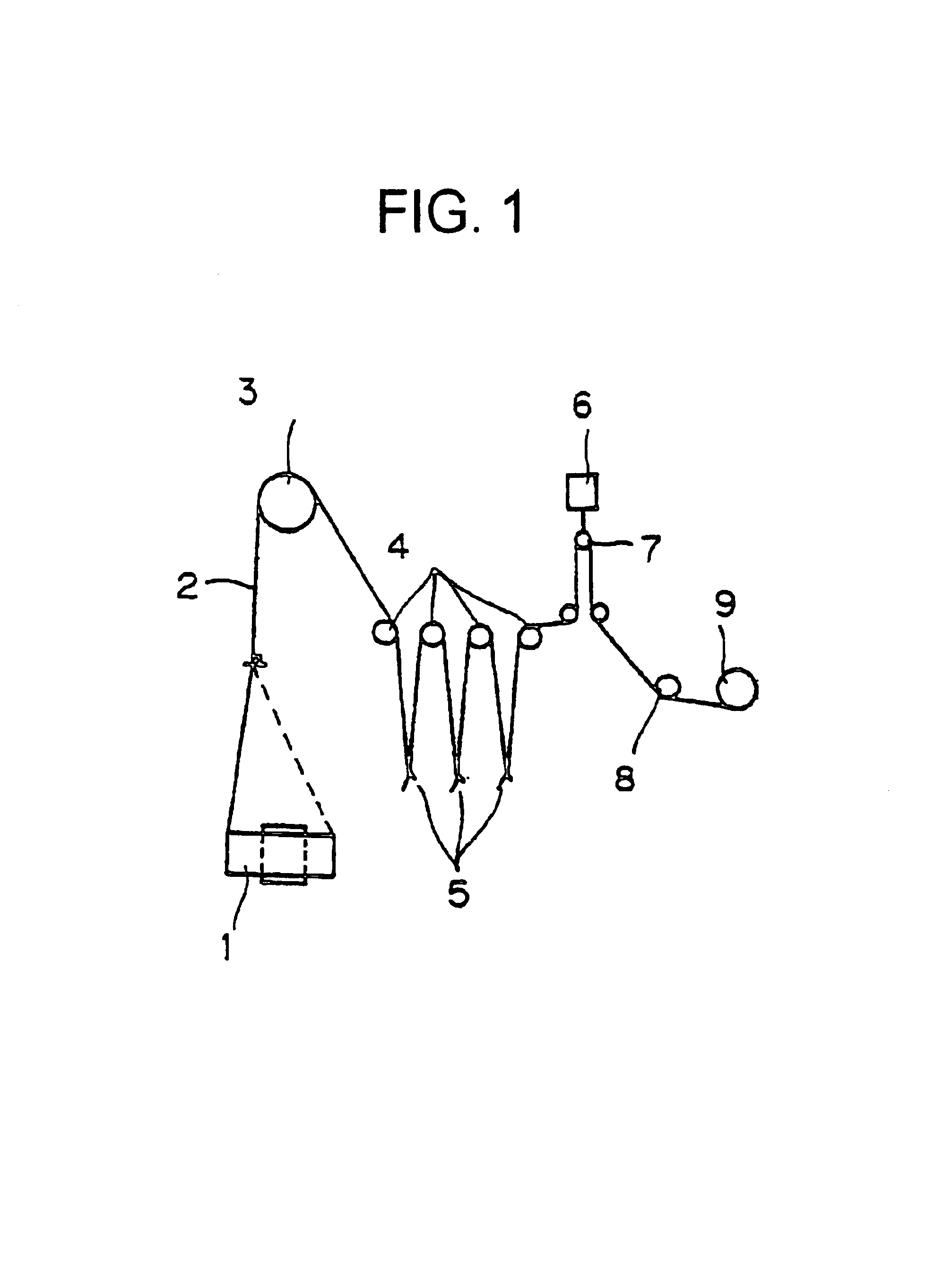Antistatic polyurethane elastic fiber and material for producing the same
a technology of elastic fiber and anti-static polyurethane, which is applied in the direction of organic chemistry, organic chemistry, chemistry apparatus and processes, etc., can solve the problems of fiber breakage, choking of the pack, and hygroscopicity of the mentioned sulfonates and others
- Summary
- Abstract
- Description
- Claims
- Application Information
AI Technical Summary
Benefits of technology
Problems solved by technology
Method used
Image
Examples
example 1
Mono- and dipolyoxyethylene lauryl ether phosphate was neutralized with an aqueous solution containing 50-% potassium hydroxide and made into a polytetramethylene glycol solution containing 50% of mono- and dipolyoxyethylene lauryl ether phosphate. The solution was heated up to 130° C. and the water in the solution was evaporated at −700 mmHg to obtain polytetramethylene glycol solution of potassium mono- and dipolyoxy-ehtylene lauryl ether phosphate containing 200 ppm of water and 0.05 weight percent of inorganic salt (hereinafter referred to as Additive a).
example 2
Crude sodium octyl sulfate containing sodium sulfate decahydrate was dissolved in ethanol to precipitate sodium sulfate decahydrate and filtered. The filtered solution was dried to obtain a powder containing 0.05 weight percent of ethanol, 0.02 weight percent of water and 0.01 weight percent of inorganic salt. Then the powder was made into N,N-dimethyl acetoamide (DMAc) solution containing 10 weight percent of the powder (hereinafter referred to as Additive b).
example 3
Crude dodecylbenzenesulfonic acid containing sulfuric acid was neutralized with a mixture of sodium hydroxide and methanol to precipitate sodium sulfate decahydrate and to obtain a methanolic solution containing 70% of sodium dodecylbenzenesulfonate. Sixty seven parts by weight of polyether-modified silicone (EO:PO=60:40, viscosity 3000 cSt at 25° C.) was added to 47 parts by weight of the solution, and the mixture was heated up to 130° C. to evaporate methanol at −700 mmHg and to obtain a solution containing 0.06 weight percent of water, 0.05 weight percent of methanol and 0.01 weight percent of inorganic salt (herein-after referred to as Additive c).
PUM
| Property | Measurement | Unit |
|---|---|---|
| Fraction | aaaaa | aaaaa |
| Percent by mass | aaaaa | aaaaa |
| Percent by mass | aaaaa | aaaaa |
Abstract
Description
Claims
Application Information
 Login to View More
Login to View More - R&D
- Intellectual Property
- Life Sciences
- Materials
- Tech Scout
- Unparalleled Data Quality
- Higher Quality Content
- 60% Fewer Hallucinations
Browse by: Latest US Patents, China's latest patents, Technical Efficacy Thesaurus, Application Domain, Technology Topic, Popular Technical Reports.
© 2025 PatSnap. All rights reserved.Legal|Privacy policy|Modern Slavery Act Transparency Statement|Sitemap|About US| Contact US: help@patsnap.com

